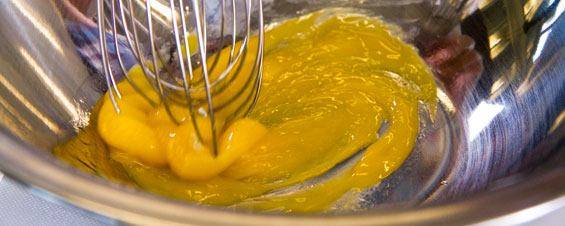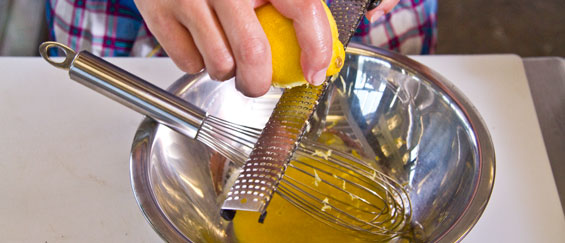How to Make Mayonnaise/Aioli by Hand
Making aioli & mayonnaise by hand provides similar results to making aioli/mayo in a food processor. It requires more elbow grease and a little moretime, but you have finer control, don’t run the risk of the machine running hot and breaking your emulsion, and don’t have to clean a food processor afterwards.
(already know the method? Skip to the aioli recipes)
DIRECTIONS




How Much Oil Should You Use?
The amount of oil a single egg yolk can emulsify is the subject of ongoing debate. Some people/books will tell you not to go above a half cup per yolk, others will say you can go up to a cup, but no higher.
In the food science tome On Food and Cooking, author Harold McGee writes:
“A single yolk can emulsify a dozen cups of oil or more. What is critical is the ratio of oil to water…for every volume of oil added, the cook should provide about a third of that volume in the combination of yolks, lemon juice, vinegar, water or some other water based liquid.” (2nd ed, pg 634)
Which Oil Should You Use?
Pretty much any oil can be used to make mayo/aioli as long as you take the flavor of that oil into account. We’ve used grape seed, olive oil and vegetable oil and blends of oils with great results.
McGee doesn’t recommend using extra virgin olive oil as the sole oil in your mayo/aioli (as a smaller part of an oil blend to add flavor should be fine), because the compounds that give EVOO its different mouth feel, stronger flavor and lower smoke point can make emulsions unpredictably unstable.
Handmade Mayo/Aioli Recipes
While aioli is technically a mayonnaise flavored with garlic (and other ingredients if desired), the term is often used to refer to any flavored mayo, whether it has garlic in it or not.
Mustard & Cider Vinegar Aioli
- 2 Egg Yolks
- 1 tbsp Whole Grain Mustard
- 1 tbsp Apple Cider Vinegar
- 1 cup Olive Oil
- 1 tsp Fresh Chives, sliced
- Salt
Add the mustard, vinegar & salt in step 2 of the above technique. Add the chives in step 6.
Lemon, Chive & White Truffle Aioli Recipe >
Food Processor Aioli Recipes (Easily Adapted to the Whisking Method)
When adapting the below recipes to the hand-whisked technique, you’ll probably want to very finely chop, paste, or puree the solid flavoring ingredients called for in these recipes before mixing them in.
Fresh White Truffle Dijon Aioli
Blood Orange Aioli
Chile Aioli


